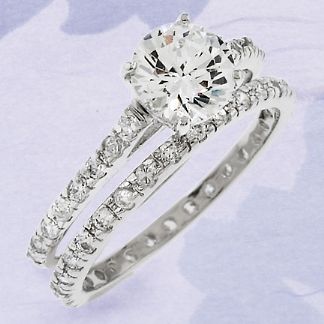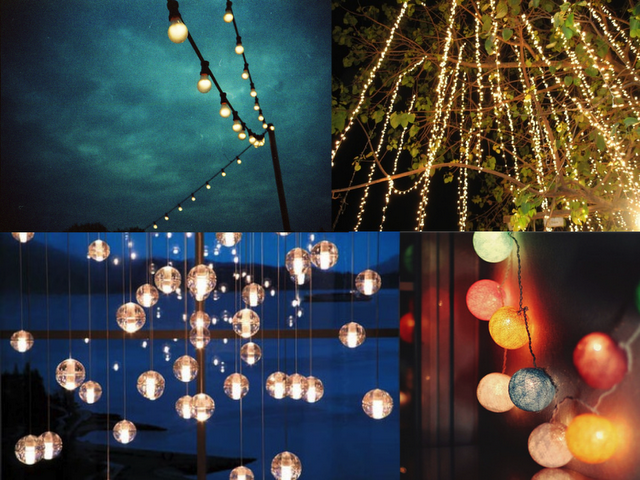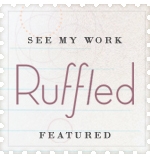Today I thought it could be helpful to provide you with insight from a wine professional to help you choose the right wines within each price bracket for your big day, or even for just a weekend get-together. So I invited Mark Bosko, direct sales manager {and groom-to-be} at Colene Clemens Vineyard {a private winery in Newberg, Oregon}, to share some advice and recommendations on choosing the right wine at the right price. Have any questions for the expert? Leave a comment {or send an email} and we’ll make sure to respond!

{personal photo}
From Mark: As a recently engaged wine professional, I am now spending less time on the internet researching wines by myself and more time researching wedding ideas with my fiancé. Believe it or not, this has been a very refreshing experience. I feel this way not only because my fiancé is my best friend and I love spending time with her (I set myself up for that one), but also because I am finding that wedding blogs are written by genuinely positive people looking to provide help, while wine blogs are almost always written by genuinely condescending people looking to inundate you with their opinions. With that said, I have created this post for two reasons: first to prove to you that not all “winos” are self centered snobs, and secondly (and most importantly) to help you find the perfect wine for your wedding without breaking the bank.
{Kristy Huston Photography}
If you are going to offer wine at your wedding, I really do think that it is important to include at least one white wine and one red wine. I am always surprised by the number of people who refuse to drink either one or the other. Unfortunately they exist and at a wedding we must cater to them all. Listed below I have categorized a few of my favorite value wines by price range. Within each category you will find a few different styles of white and red wines that will hopefully not only appeal to you and your budget, but also your wedding party, extended family, friends, neighbors…etc.
Less than $10/bottle :
Wines that are priced under $10/bottle are generally mass produced in large facilities so that they cost less to make. To make this possible, they are usually made from blends of grapes grown in much broader areas (i.e. California or Australia) rather than a more specific area (i.e. Napa Valley, California or Barossa Valley, Australia). You will find wines of all types in this price range, but listed below are a selection of wines that I think have the most quality for the price.
Pinot Grigio (Italy) – There are a number of different regions in northern Italy that make an affordable version of this delicate white wine. The regions of Friuli and Trentino-Alto Adige are among the best and with a little time and energy you should be able to find a few of these wines that are priced less than $10/bottle. These are lighter styled wines that finish with bright acidity and pair exceptionally well with lighter seafood dishes.
Verdejo (Spain) – If you enjoy Sauvignon Blanc and are looking for a less expensive option, look to the Rueda region of Spain. Verdejo is the grape and it tends to be a light to medium bodied white wine that is more floral than fruity. This is a very refreshing wine that is great in the summertime.
Torrontés (Argentina) - Although Torrontés is still a fairly obscure varietal, it is arguably the most popular white wine made in Argentina. They may not be the easiest wines to find here in the United States, but they are well worth the extra effort if you are looking for value. This would be a great alternative to a Chardonnay because they iare usually medium bodied, very aromatic and can pair really well with food.
Shiraz (Australia) – There is so much Australian Shiraz on the market that they have become very, inexpensive. These wines are typically packed full of dark fruits, oak and spice. There are a lot to choose from for less than $10/bottle, so I would highly recommend buying a few different producers so you can taste the difference and see which labels you like best.
Carmenere (Chile) – In the glass Carmenere can look almost black in color and as its color suggests, it expresses a lot of dark fruit characteristics. These wines are known for being big and juicy. This is a great red wine if you are looking to spend around $10/bottle.
Malbec (Argentina) – Similar to Shiraz and Carmenere, Malbec is another dark wine that can be a great value for just under $10/bottle. Close your eyes and imagine a glass of deeply colored wine that smells and tastes of concentrated dark fruits such as blackberries, plums, blueberries…you get the idea, right?
$10 - $20/bottle:
For $10 to $20 a bottle you can find some really well made wines and unfortunately some really poorly made wines as well. When shopping for value in this price range, my advice would be to look for International wines (both white and red) or more specifically Domestic whites (from California and Oregon). In this price range the difference of a few dollars can make a huge difference in quality, but don’t be fooled into thinking that you are always getting a deal when an $18/bottle of wine is discounted to $12/bottle. There is usually a really good reason why that wine is heavily discounted and it is because the quality of the wine was not worth the original price tag to begin with.
Chardonnay (California) – Although you can find Chardonnay from California for less than $10/bottle, I wouldn’t recommend it. This is not a wine you want to go cheap on, but once you enter the $12+/bottle range they start to become much more interesting. Always remember that Chardonnays made in stainless steel are usually lighter in style while those made in oak tend to be more full bodied.
Pinot Blanc (Oregon) - Pinot Blanc is one of my favorite white varietals grown in Oregon because they are crisp and clean, with subtle aromas reminiscent of stone fruits (peaches, apricots, nectarines). Another great thing about these wines is that some of the best and most expensive bottles tend to cost no more than $18. This is a great choice if you are looking for a lighter styled white wine with little to no oak influence.
Sauvignon Blanc (New Zealand) - You will find Sauvignon Blanc (SB) grown all over the world, but if you are looking for value, look for SB from New Zealand. With that said, as much as I enjoy these wines, I have learned that they do not always appeal to everyone. They tend to have a unique array of herbaceous aromas and flavors, so I highly recommend trying these wines before committing entirely to them for your wedding.
Tempranillo (Spain) – There are a number of regions in Spain that produce Tempranillo based wines. Some of these you may have heard of before (Rioja, Ribera de Duero), but my advice would be to look to the lesser known regions of Castilla - La Mancha, Tierra de Castilla and Toro to get the most value. These wines should be light to medium in body, display fresh fruit characteristics and have a nice smooth mouth feel.
Languedoc (France) – The Languedoc region of France is the single largest wine producing region in the world and because of this you will find wines at every price point. The value red wines produced there are not specific to a single varietal but are instead blends comprised of a few different varietals (i.e. Syrah, Mourvedre, and Grenache). They are medium bodied wines and have flavors and aromatics that remind me of dry rub spice blends that you grill meats with. Did someone say barbecue?
Zinfandel (California) – I have had the opportunity to taste various Zinfandels produced in California that cost over $40/bottle and those that cost around $15-$20/bottle. Although there is a noticeable difference between the two, I am always pleasantly surprised by the quality that you get for less than $20/bottle. To me they are consistently full bodied wines packed to the rim with dark, jammy fruits. As comic book heroes go, this wine is less like Spiderman and more like the Incredible Hulk.
$20/bottle or more:
As I mentioned above, you do not need spend more than $20 to enjoy a good bottle of wine. With that said, I am from Oregon and a huge advocate of supporting local wines, so…if you can afford to spend more than $20 on a bottle of white or a red wine for your wedding then look no further than the Chardonnay and Pinot Noir from the Willamette Valley. These are two extremely versatile wines because they will taste great with or without food. The Chardonnays from this region are light – medium in body and have highly perfumed aromatics reminiscent of tropical fruits (melon, pear, peach), while the Pinot Noirs from this region are also light – medium bodied, but instead express a combination of red (cherry, raspberry) and black fruit characteristics (blackberry, black cherry). When it comes to finding some of the best value whites from this area, seek out these producers: Chehalem, Adelsheim, Elk Cove and Westrey. And, when it comes to finding some of the best and most affordable Pinot Noirs from this area, look for wines from these producers: Crowley, Brooks, Ayres and of course where I work at Colene Clemens (I obviously set myself up for that one too). Also, don’t be afraid to contact these wineries directly if you can’t find them in your local wine shop. Not only will they be able to ship their hard-to-find wines directly to you, they usually offer additional discounts on your purchase.
 {Colene Clemens Vineyard}
{Colene Clemens Vineyard}
In closing, the world of wine can be a very overwhelming and complicated place. Just when you thought you found your favorite grape varietal (i.e. Chardonnay), you later find out that you don’t like every Chardonnay out there. The characteristics of a wine will always be different depending on climate, soil and each individual winemaker’s style. To make matters even more confusing, everyone’s perception of wine is different. What does this all mean? To me it means that there is no fool proof way to generalize the styles of wine produced in a given area or to know ahead of time exactly what you will like or dislike. With that said, I tried my best to give you a place to start, but in the end you should always taste wines yourself, keep an open mind and learn from experience.
Cheers!































